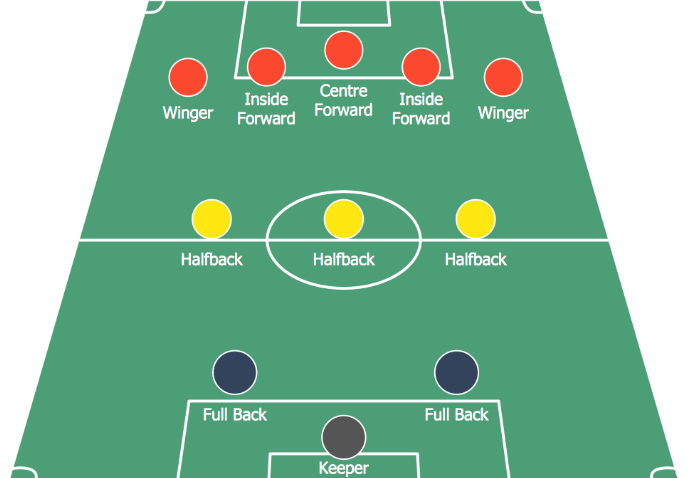Football has always been a game of skill, strategy, and constant evolution. The fundamentals of the game remained unchanged, with 11 players for each side, but the tactical part of the game transformed greatly over the decades. From the weird formations of the 19th century to the renewed tactics of modern football, formations have a crucial role in shaping how teams attack, defend, and control the game.
Understanding the evolution of football formations is essential for any football enthusiast. You will understand how the game has been developing, how legendary coaches have influenced tactics and how tactics can change a football game and become referenced in football history.
In this article, I’ll show you the biggest changes in the evolution of football formations. We will analyze legendary matches where formations made a difference in the final result, and discuss the role of key players in their positions and managers who changed the game forever.
Table of Contents
- The Evolution of Football Formations: From Chaos to Tactical Prime
- Football’s Earliest Days: No Structure, Just Chaos (1800s – Early 1900s)
- WM Revolution (1930s – 1950s)
- Rise of Defensive Structures and the Catenaccio Era (1950s – 1970s)
- Total Football (1970s – 1980s)
- Arrigo Sacchi and the Modern Pressing Game (1990s – 2000s)
- Rise of Tiki-Taka: FC Barcelona and Positional Play (2000s)
- Tactical Innovation: Pressing, False Nine and Formations (2010s)
- Future of Football Formations: What’s Next?
- The Ever-Changing Game
- Create New Formations with FootballTeam
Football’s Earliest Days: No Structure, Just Chaos (1800s – Early 1900s)
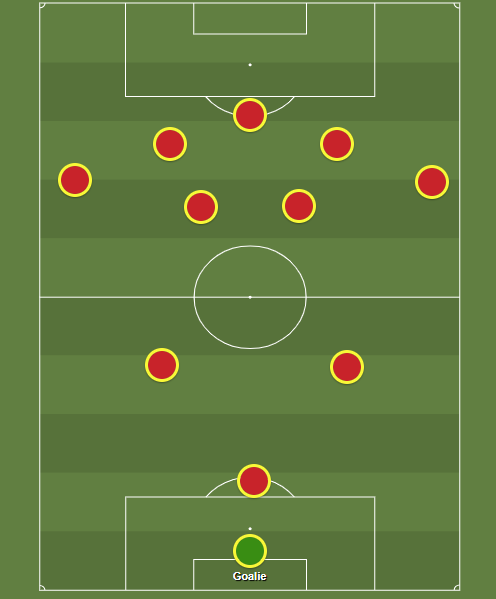
In the earliest days of football, formations practically didn’t exist. The game was a battle where players fought for the ball, much like in rugby, with a short knowledge of positioning or tactical structure. Teams played with an attacking display, sending most of their forwards to the offensive field in search of scoring a goal against the opponent. There was no distinction between defenders, midfielders and centre forward – every player was involved in both the defence and attack as needed.
The sport became more organized in the late 19th century, so the first known formation began to appear. The 1-2-7 formation was one of the earliest tactics, reflecting the unbridled attack in the game. With only one player staying back to defend, two midfielders moving play, and seven forward strikers leading the team, this tactic prioritized the offensive style of play and more offensive-minded teams over everything else.
2-3-5 Pyramid: Football’s First Tactical Revolution
2-3-5 Pyramid Formation via Concept Draw
In the early 1800s, the teams and coaches studied more to improve tactics. This approach led to a new formation, the 2-3-5 Pyramid formation, which became the most used tactical system of the early 20th century and was used for some teams until the 1930s. The formation had:
- Two Fullbacks (Defenders): who stayed near the goal to prevent opposition attacks.
- Three Half-Backs (Midfielders): who played an important role in both defense and attack.
- Five Forwards (Strikers and Wingers): responsible for goals and overload the opposition’s defense.
This setup introduced the first distinctions between defensive, midfield, and attacking roles. It was effective at a time when dribbling was a differential in the game, allowing faster and more direct attacks. The 2-3-5 was adopted by national and club teams and remained the standard formation for decades as an attacking formation.
Influence of Scottish Passing and First International Football Match
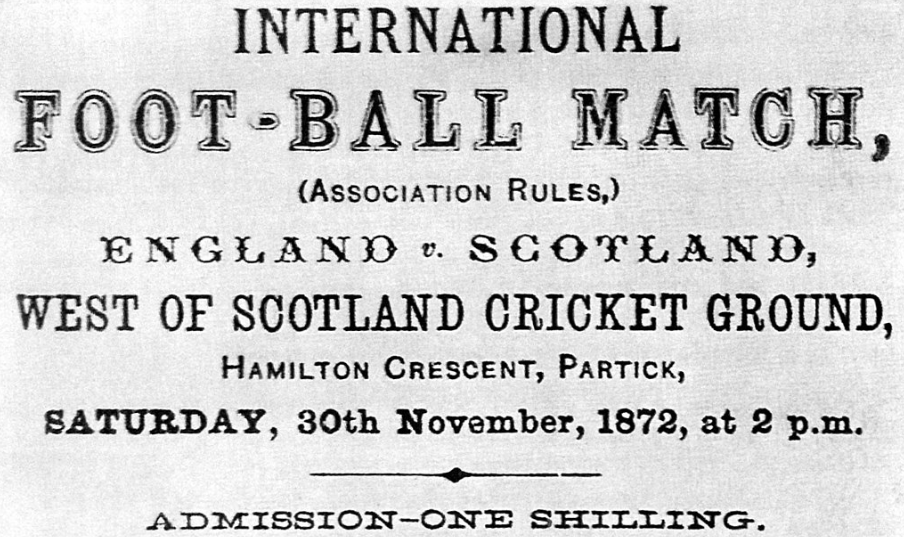
One of the earliest tactical evolutions came from Scotland, where teams developed an organized style of play focused around passing. While English teams preferred individual dribbling ability, Scottish teams introduced the concept of short passes, team coordination, and positional awareness.
These new tactics and formations were presented in the first-ever international football match between Scotland and England in 1872. The Scotland national team played with a structured passing game, using a version of the 2–2-6 formation, while England focused on individual skill and dribbling. The way Scottish players behaved on the field was fundamental to the evolution of modern football tactics.
Despite its success, the 2-3-5 formation had some weaknesses. The lack of dedication of a central defensive midfielder and the huge spaces between the lines left teams vulnerable to counter-attacks. The central defenders were often overloaded, as they were expected to defend and control the game as a central attacking midfield and support attacks at the same time.
This defensive fragility allowed many goals to be scored, and high-scoring matches were common. As football evolved and became more competitive, teams started to dedicate themselves more to defense while maintaining efficiency in the attack.
This perception led to the first big change in football—one of the central attacking midfielders would have to play a new role, retreating a little to balance the team.
Teams That Shaped Early Formations and Tactical Thinking
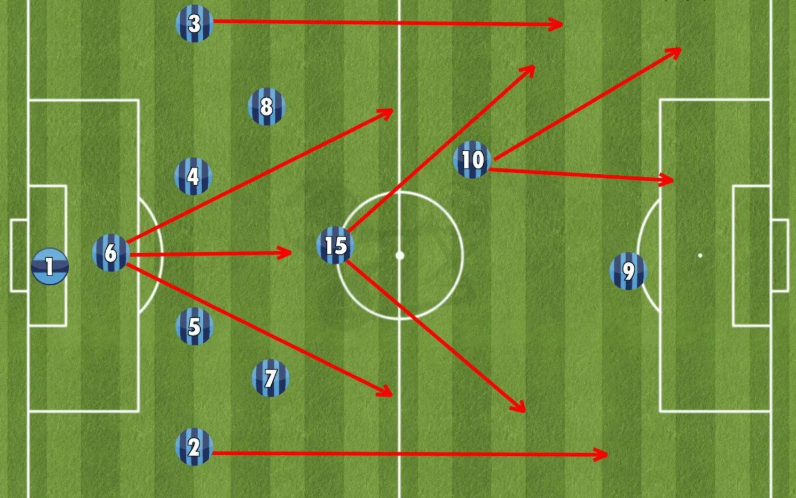
- Scotland vs. England (1872): Marked the introduction of structured passing and positional play, influencing future tactical evolutions.
- Italian National Team (1920s – 1930s): Italy began with formations more defensive, started a new era of tactics with the famous “Catenaccio” system.
- Arsenal (1920s – under Herbert Chapman): Arsenal was one of the first teams in the world to modify the 2-3-5, using a forward back into midfield.
In the early 1900s, the teams had the perception that simply attacking with five forwards wasn’t always effective. The introduction of tactical awareness, where each player had a role, marked the first steps to begin the new formations of modern football. Managers began experimenting with different displays, leading to more balanced formations in the following decades.
The next huge change in football tactics came in the 1930s, when managers like Herbert Chapman introduced the 3-2-2-3, which was a particularly defensive formation compared to those that already existed, leading to the decline of the 2-3-5 and starting new tactics, more structured.
WM Revolution (1930s – 1950s)
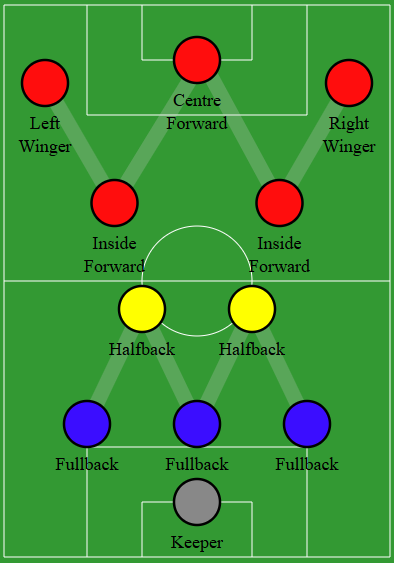
As football evolved, so did the creation of a more structured and balanced tactical system. The early 20th century began introducing one of the most influential formations in history, the WM formation. This formation was developed by Herbert Chapman, who led Arsenal for nine years.
The 1925 offside rule change prompted the development of this formation. The new rule stipulated that only two defenders, rather than three, were required to be between the ball-carrier and the goal line for an offside offense to occur. This change benefited attackers, as a successful midfield breakthrough now presented a greater scoring opportunity due to the decreased defensive presence.

Statue of Herbert Chapman outside Arsenal’s Emirates Stadium via Coaches’ Voice
The WM formation (3-2-2-3) was revolutionary because it introduced a more structured configuration between defensive and offensive playing. Instead of the heaving attack displays of the past, teams now had a defensive triangle composed of three central defenders, with two defensive midfielders (half-backs) relocated in front of the defenders.
The midfield featured two attacking midfielders in a free role, creating a connection between defense and attack, focusing on the attacking midfielder moving play through the center with the strikers on either side. Meanwhile, the three forwards were now more established, with an out-and-out striker supported by two attacking wide midfielders.
This new tactical setup allowed teams a stronger defensive ability while still allowing a powerful attack. The English national team and various clubs across Europe and South America adopted this formation, such as Arsenal and Uruguay national team.
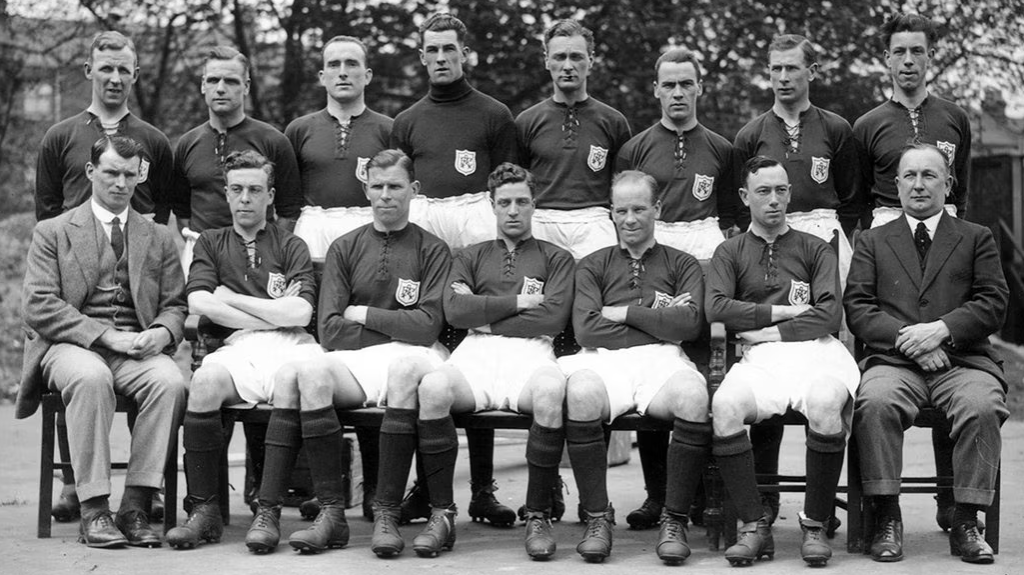
One of the most famous teams to utilize the WM formation successfully was Arsenal under Chapman, dominating English football in the 1930s, winning two Football League First Division, one FA Cup, and three FA Charity Shields. However, in international football, the system was adopted and adapted by various national teams.
The Italian national team was one of them. It used a variation of the WM formation with a focus on a strong defensive tactic and, as a consequence, won the 1934 and 1938 FIFA World Cups.
In the 1950s, the WM formation started showing its limitations against teams that left space for the offensive central midfielder that played with flexible formations and the opposing team’s forward and the striker would have more space to act.
With an offensive midfielder dominating the midfield and a well-trained defense, it led to new evolutions in tactics, giving a new chapter in football tactics, focused on ball possession, vulnerable counter attack situation and great defensive formations.
Rise of Defensive Structures and the Catenaccio Era (1950s – 1970s)
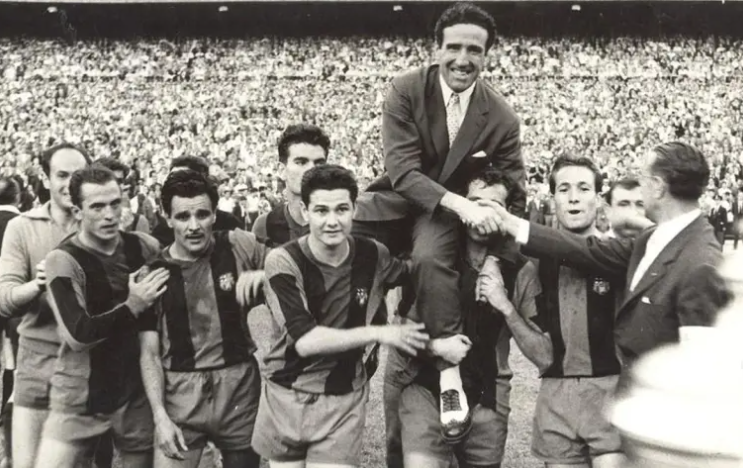
Helenio Herrera was one of the pioneers of the Catenaccio system via The Untold Game
As football continued to evolve, teams began prioritizing defensive responsibility and organization instead of attacking play a few years ago. This change led to the creation of formations that focused on structured defending, such as Catenaccio, a system created by the Italian football school.
Catenaccio, which translates to “door-bolt” in Italian, was a defensive formation focused on maintaining a compact structure. The half-backs supported the defenders, neutralized the opposing team, and used the counter-attack to score goals.
The game revolved around a sweeper, or libero, a player positioned behind the defensive line to provide cover and intercept opposition attacks. Libero allowed teams to contain the pressure and consciously attack, making the team difficult to overcome.
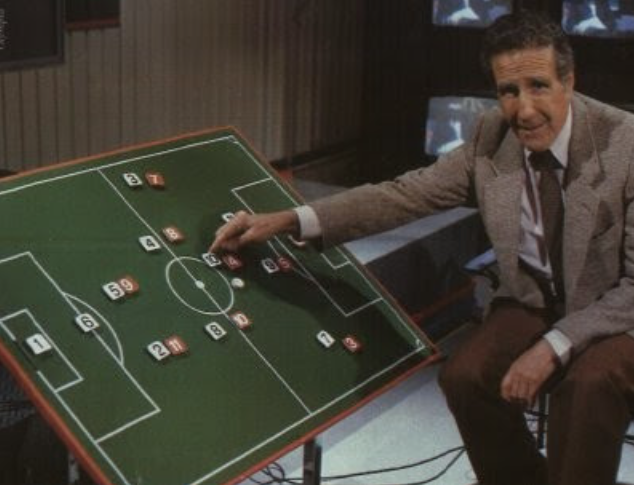
Helenio Herrera explaining his formation via Fiifi Anaman
The most famous person connected with the Catenaccio system was Helenio Herrera, the legendary manager of Inter Milan in the 1960s. With the former Argentine manager, Inter dominated Italian and European football, winning three Serie A, two Intercontinental Cups, and two following European Cups, known as the UEFA Champions League today, in 1964 and 1965.
His tactical setup involved a conventional defensive configuration, using three central defenders, two defensive midfielders, and fullbacks who played more setback. The central midfielders act like defenders to maintain the team well-posted.
1970 FIFA WC – Italian National Team
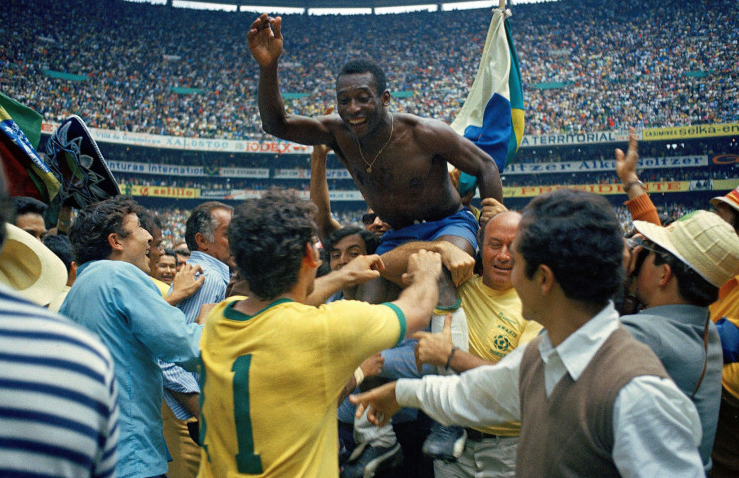
1970 FIFA World Cup final via Wikipedia
Despite its effectiveness, Catenaccio was criticized for prioritizing defense more than creativity in the field. This was evident in the 1970 FIFA World Cup final, where Italy, despite reaching the final using a variation of Catenaccio, lost the game 4-1 to the Brazilian national team, which played with a captivating attack and fluid system featuring offensive midfielders, attacking midfielders and strikers playing with freedom.
This game showed the vulnerabilities of Catenaccio against teams that prioritized ball possession and a creative attack. By the late 1970s, Catenaccio began to lose importance, since the teams sought more balanced attacking and defending.
Then came Total Football, which focused on free players on the field and player versatility, beginning a new era in football formations. While Catenaccio wasn’t a system that dominated for a long time, its defensive organization and game strategies shaped some ideas of current football.
Total Football (1970s – 1980s)
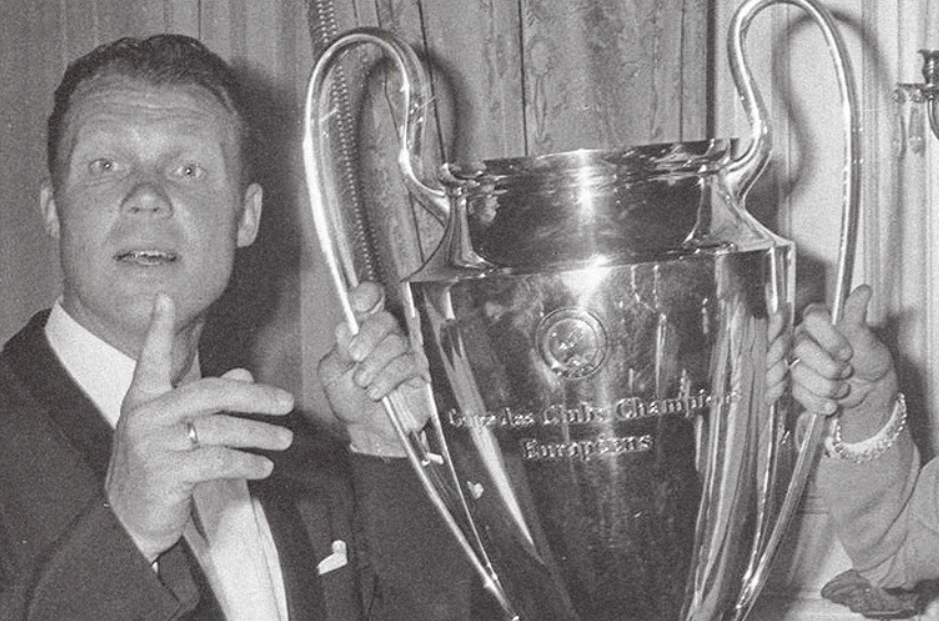
In the 1970s, a revolution happened in the football formations emerging from the Netherlands, changing how teams viewed team setups, positioning, and movement on the field. Known as Total Football, this system preferred the versatility of players and attacking play, challenging traditional defensive tactics like Catenaccio and inspiring future generations in world football.
The main role of Total Football was the idea that every player should be able to play every role on the field, from defenders to midfielders and even forwards. This approach needed high technical ability, intelligence, and teamwork, as players were expected to change positions during the game.
Rinus Michels, a former Dutch manager is known as the creator of Total Football, most notably during the 1974 FIFA World Cup, when Netherlands reached the final, but was defeated 2-1 by West Germany.
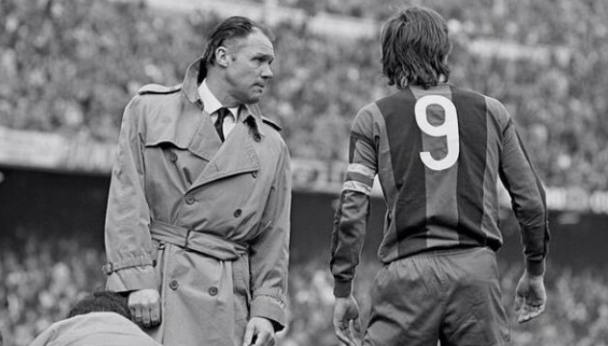
Rinus Michels and Johan Cruyff via Sport 360
Total Football focused on fluid movement and positional change on the field. The classic setup was a 4-3-3 formation, with wingers providing amplitude, midfielders controlling the midfield, and the defenders often helping the forwards in the attack.
The key player in this system is known as sweeper, or libero, a defender with freedom to support the attack when needed, while the player can drop back and cover the defense. This versatile role was performed very well by Johan Cruyff at Barcelona, who was crucial in maintaining the balance between attack and defense.
The success of the system happened with the Dutch national team, during the 1970s, particularly in the 1974 FIFA World Cup, when the Dutch reached the final.
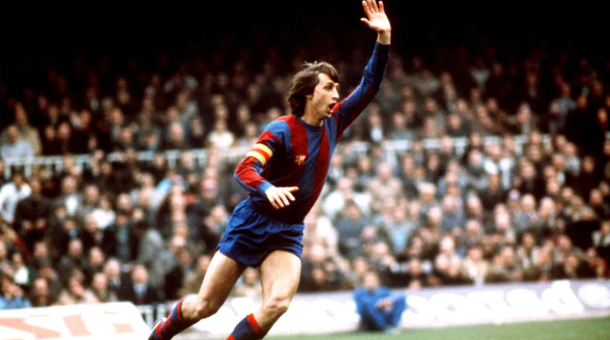
Johan Cruyff as Barcelona player via Eurosport
As the system consolidated, many teams across Europe began adopting techniques of Total Football, with Bayern Munich and FC Barcelona being the biggest examples of clubs that had success using its principles in the 1980s.
During the 1980s, Total Football continued to evolve, blending creativity and freedom for players. While the Dutch national team didn’t achieve huge trophies, the legacy of this new system remained in football, influencing and developing many tactics that are seen in modern football today.
Its philosophy started one of the greatest formations in current football, with the 4-3-3 formation, which is now used by top clubs and national teams around the world, including the FC Barcelona under Pep Guardiola, with his Tiki-Taka style in the 2000s.
Arrigo Sacchi and the Modern Pressing Game (1990s – 2000s)
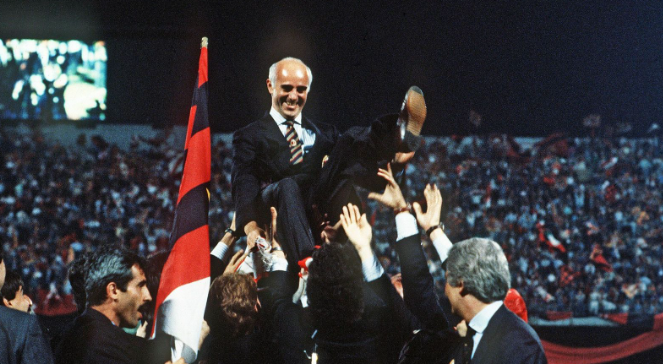
Arrigo Sacchi as AC Milan manager via Sky Sports
The 1990s began a revolution in football formations, with a new way of playing, the compact style on the field. This formation was characterized by high pressing and a team that was more united and compact.
One manager who stood out as the creator of this style of play was Arrigo Sacchi, an Italian manager that emerged as one of the most influential coaches of the time. The philosophy of Sacchi changed how teams played both in attack and defense, leading to the modern pressing game, which is indispensable in the elite of world football.
Sacchi, focused on building his teams around the concept of compactness – an ability to keep the players close and organized, especially when the team had the possession of the ball and was transitioning between defense and attack.
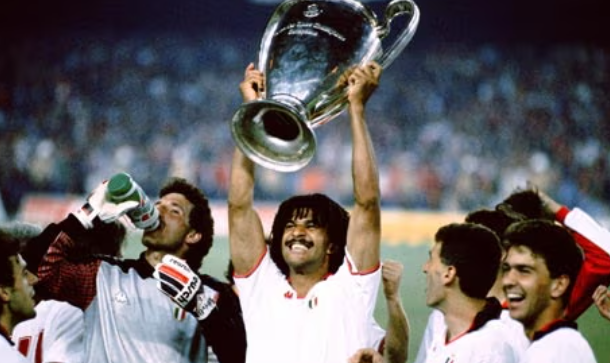
AC Milan won the 1989/90 European Cup via The Guardian
In the late 1980s and early 1990s, Arrigo Sacchi revolutionized tactics at AC Milan. His 4-4-2 formation was not the key innovation; rather, it was how the players moved as a cohesive unit. The defenders pushed high up the pitch, compressing the playing space with an extremely high defensive line. This created a compact team that stifled opponents by suffocating their attacks and stopping them in their tracks.
AC Milan and its coach dominated European football in the 1980s, winning two following European Cups in 1989 and 1990. Milan won its first European Cup against Steaua Bucuresti by 4-0. With two Dutch players being the men of the match, Marco van Basten and Ruud Gullit. Milan won their second European Cup in the next year, defeating Benfica, a Portuguese team, by 1-0 in the final. The goal was scored by another Dutch player, Frank Rijkaard.
The system of Sacchi was focused on high pressing, where his teams would apply pressure against their opponents. This pressing system was created to force the opposing team into making mistakes and losing possession of the ball in dangerous areas.
Sacchi’s influence was more than Milan, with his characteristics being adopted by several teams around the world, including the Italian national team.
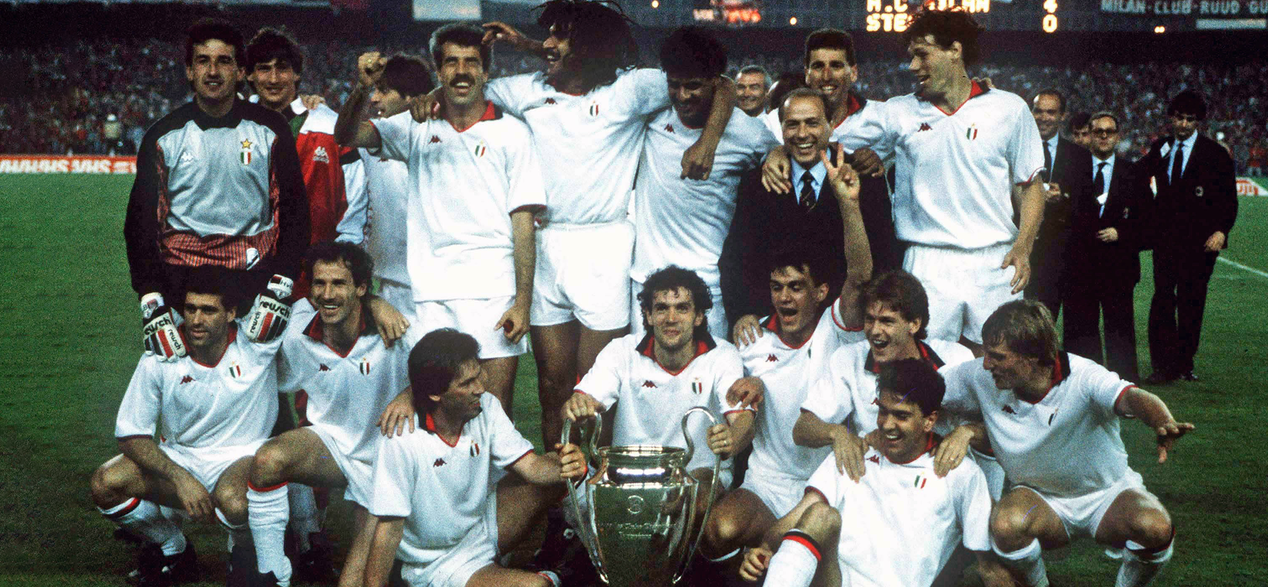
Another important feature of the revolution in football was the continuation of attacking football, with the team always well compacted and counting on the individual genius of the players. The team would always dominate its opponent and control the game, stopping the adversary, maintaining ball possession, and building attacks from the back.
The compression was evident when the midfielders and forwards played together to dominate the central part of the pitch. They ensured a quick transition between them, causing all plays to become dangerous in a matter of seconds.
Sacchi was the pioneer of this style of play, which can be seen to this day, especially the gegenpressing (or counterpressing in English) style used by coaches like Jürgen Klopp and his teams, or in an uncommon modern formation that focuses on ball possession and pressure on the opposing team.
The Italian manager was important to accelerate football, without the players being static on the field without many functions, making it a game of creativity and very beautiful to see. The AC Milan team was considered by many people, one of the coolest teams to watch and that continues to influence football today.
Rise of Tiki-Taka: FC Barcelona and Positional Play (2000s)
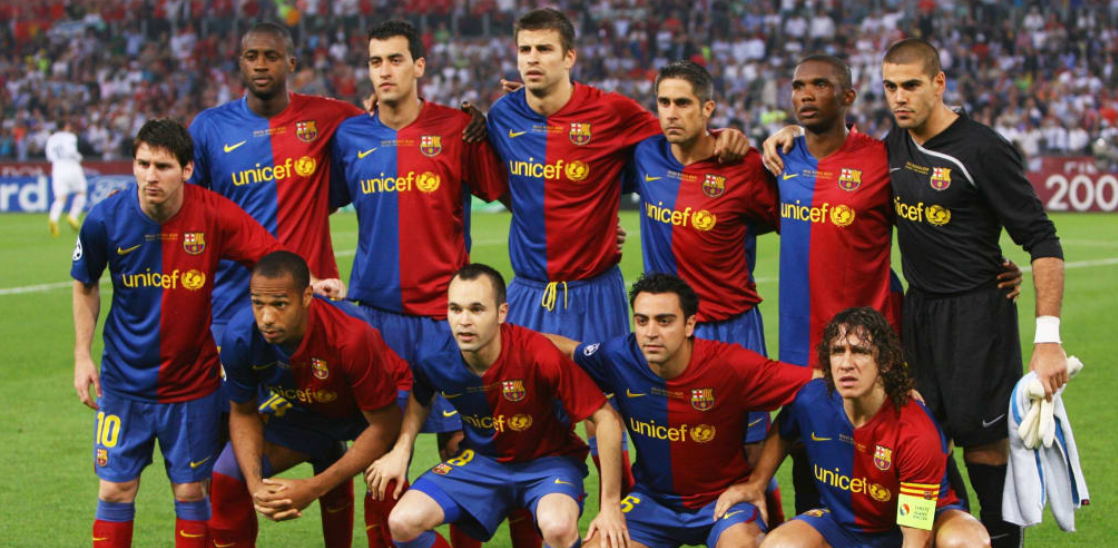
The 21st century ushered in a new era of tactical evolution in football with the emergence of Tiki-Taka in Spain. Pioneered by FC Barcelona under Frank Rijkaard and perfected by Pep Guardiola, Tiki-Taka is characterized by short, precise passes, and maintaining ball possession.
The strategy centers around positional play, emphasizing optimal player positioning without the ball to create passing lanes and organized attacks. Through vertical and elaborate plays, players patiently wait for the perfect scoring opportunity.
Unlike the football of the 1990s, Tiki-Taka prioritizes ball retention and quick recovery upon loss of possession. This innovative approach, combined with a roster of exceptional players, propelled FC Barcelona to dominance in world football in the early 21st century.
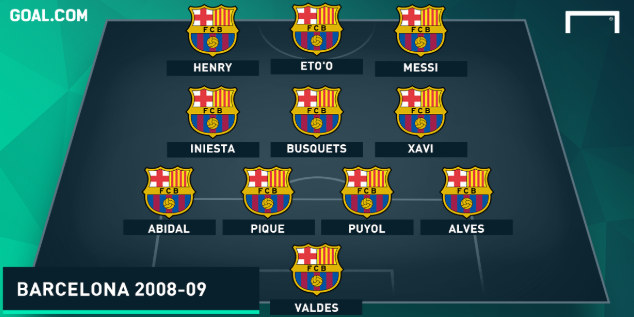
2008/09 FC Barcelona squad via Viking Barça
With Guardiola, the Tiki-Taka reached its peak. It’s interesting, since the coach didn’t like to use that term. Influenced by Johan Cruyff’s teachings, he implemented his ideas and made FC Barcelona one of the best teams in football history.
The renowned Spanish playmaker Sergio Busquets was central to the team’s 4-3-3 formation, which prioritized fast, accurate passing. A key aspect of Tiki-Taka was numerical superiority across the pitch, particularly in midfield, where Busquets was joined by two other Spanish midfield maestros, Andrés Iniesta and Xavi Hernández.
Having the ball possession wasn’t the only characteristic of Guardiola and his team. He liked to dominate the game and dictate the rhythm, making his opponents almost not touch the ball. When the ball was lost, they pressed intensely until they managed to conquer it again, always being very offensive and creating many chances of goal.
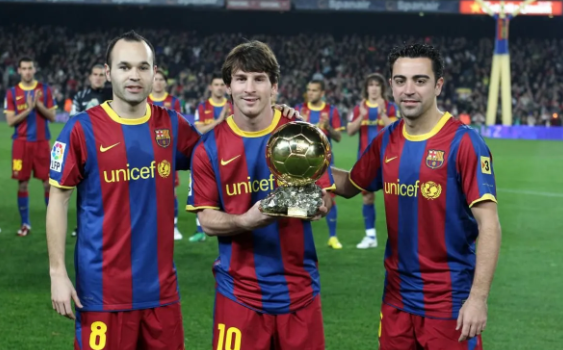
Iniesta, Messi and Xavi in 2010 via Aesthetic of Design
FC Barcelona’s triumphs during this era were extraordinary. They won five La Liga titles, two Copa del Rey trophies, and two UEFA Champions League titles in 2006 and 2009. Tiki-Taka not only influenced FC Barcelona; the Spanish football school was totally modified, and the Spanish national team adopted a similar style, leading them to victory in the 2008 UEFA Euro, the 2010 FIFA World Cup, and the 2012 UEFA Euro.
The success of Tiki-Taka under Guardiola was much more than ball possession – it was a new philosophy created for a team that was already one of the biggest in the world, and which Guardiola would take the style to the Premier League today.
Tactical Innovation: Pressing, False Nine and Formations (2010s)
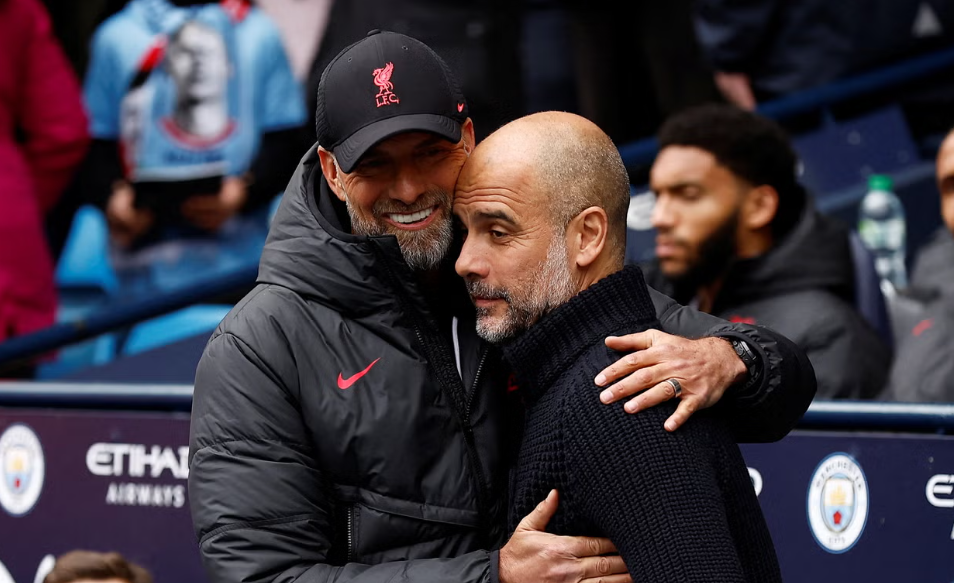
In the 2010s, a new era of formations arrived in football, modifying modern football once again. High pressing, false nine, and hybrid formations became key elements in how teams played in attack and defense. Jürgen Klopp, former Liverpool manager, and Pep Guardiola, current Manchester City manager, introduced revolutionary formations and ideas, making teams even more dynamic and adaptable.
The high pressure that was already seen in football in the last decades, continued in the 2010s. Klopp and Gegenpressing, a new tactic for his game system was introduced in Borussia Dortmund and later in Liverpool FC. The strategy focused on recovering the ball quickly after losing the possession, forcing opponents to make mistakes and creating quick transitions from defense to attack.
At the same time, Guardiola, who would have already popularized the false nine in Barcelona, using Lionel Messi at the beginning of his career in this position, also tested Samuel Eto’o. Guardiola began to use other Spanish strikers, such as David Villa and Pedro, to play this role in the 2010s. Villa was also important for the Spanish national team in the championships of La Roja between 2008 and 2012.
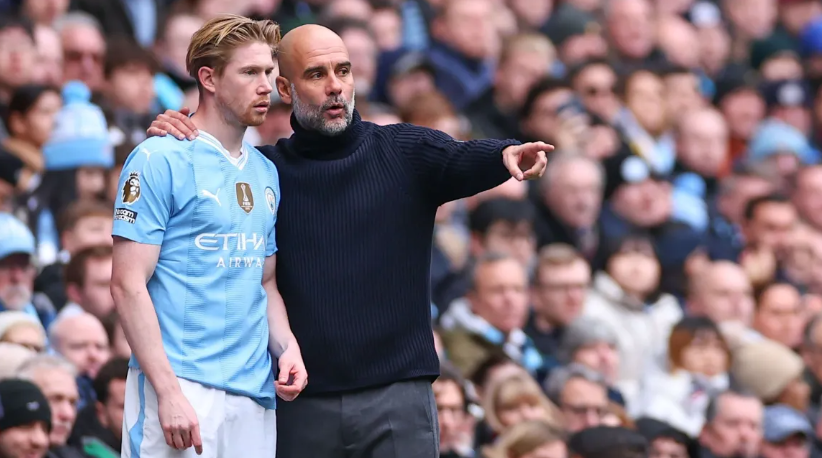
In 2012, Guardiola left Barcelona and became the coach of Bayern Munich for almost 4 years. During his time there, he led the team to three Bundesliga titles but was unable to secure the coveted UEFA Champions League.
In 2016, Guardiola signed a contract with Manchester City and began to evolve his formations from the traditional 4-3-3 to a more dynamic 4-1-4-1 or 4-2-3-1. Key to this evolution was midfielder Kevin de Bruyne, who enabled Guardiola to implement a system of positional rotation among the midfielders.
This flexible approach, which extended to the strikers, is still evident in the club’s play today, more than 10 years later.
A key component of Guardiola’s system at Manchester City was the role of Brazilian midfielder Fernandinho. Depending on the team’s ball possession, Fernandinho would either drop back to form a three-man defense or push forward to organize the attack.

Antonio Conte won the 2016/17 Premier League with Chelsea via Eurosport
In the 2016/17 season, Chelsea appointed Antonio Conte, an Italian coach, as manager. Conte would win the Premier League in that season with 30 victories in 38 games. He adopted a formation with only three dedicated defenders, using the 3-4-3 formation.
With this formation, the team won a stronger defensive shape while allowing their full-backs, such as Victor Moses and Marcos Alonso, to advance on the field and participate in the attack. This strategy provided Chelsea with both defensive solidity and a fast attack with the wings, Eden Hazard and Pedro (yes, the one who also played in Guardiola’s Barcelona team).
The innovative use of wing-backs, such as Moses and Alonso, continues to be a key strategy for top football teams today. One example is Xabi Alonso’s Bayer Leverkusen team, which utilizes Frimpong and Grimaldo in these roles.
Future of Football Formations: What’s Next?
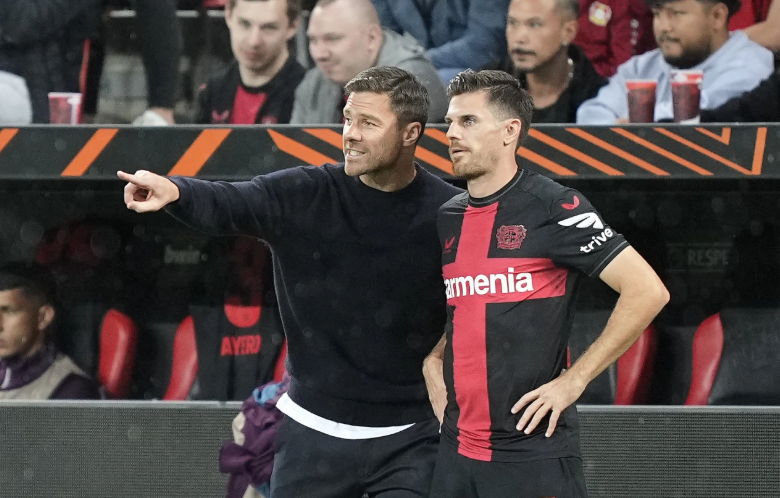
Xabi Alonso as Bayer Leverkusen manager via AP News
The evolution of football formations is being shaped by data analytics, artificial intelligence, and new coaching philosophies. Coaches and assistants now have access to vast amounts of information, allowing teams to analyze their opponents and optimize tactics in real-time. Additionally, managers can leverage new technologies to implement dynamic formation changes during a game.
Tactical flexibility is becoming increasingly crucial in football, with managers like Xabi Alonso and Pep Guardiola changing their teams’ formations mid-game. Future football formations will likely emphasize positional fluidity, with players changing roles to confuse opponents and exploit open space on the pitch.
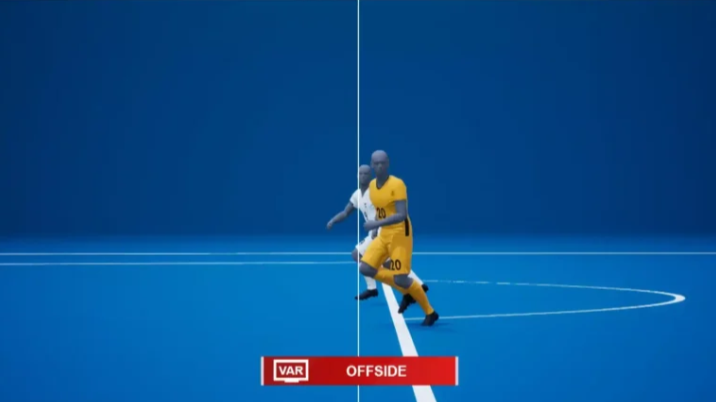
Semi-automated offside during the game via Robotics and Automation Magazine
Technology is also revolutionizing game decision-making. AI and machine learning analyze live match content to suggest new changes and tactical adjustments. These technologies could help track player fatigue, allowing managers to modify formations during the game.
The game has also been improved by rule changes, such as the semi-automated offside technology which allows for faster and more accurate offside calls, and the increase in substitutions permitted during a match. These changes have made the game more fluid and dynamic, and have also helped to prevent fatigue among players.
As football continues to evolve in the coming years, formations will only become more crucial. We can also expect to see continued advancements in areas such as hybrid players (players who can take on multiple roles), high-pressing strategies, and technology.
The Ever-Changing Game

2024/25 Real Madrid CF squad via Managing Madrid
The ongoing evolution of tactical formations and technologies in football keeps fans and analysts engaged, as new formations can dramatically change the course of matches. These tactical developments are driven by the creativity of coaches and the commitment of players to execute their ideas on the pitch.
Looking ahead, the future of football formations promises even greater innovations. As technology advances and becomes an even more integral part of the game, formations will become important with hybrid players, allowing coaches to adjust the team in real time based on the dynamics of the match and his needs.
The evolution of football formations will be characterized by adaptability, hybrid players and integration of new technologies, ensuring that the game remains exciting, dynamic and full of surprises when we want to watch a good football match.
Create New Formations with FootballTeam

We showed you the evolution of football formations in history, and now it’s time for you to dominate the football pitch in the virtual world and write your beautiful history. FootballTeam is the next-level experience you’ve ever wanted, taking your competitive spirit one step further against people from all over the world.
Join over 1 million registered players in a series of different competitions, each one with its own set of rules. Test your abilities as both a player and manager, allowing you to do everything you want and create the dream team to achieve everyone’s dream: becoming the #1 player in the world.
You can also invite your friends and enjoy this experience together to see who’s the best among you. The game allows you to connect with people from all over the world through a series of devices, whether desktop or mobile, right from your browser, dismissing the need for downloads.
Customize your own character and prepare to dominate the sports scene in this incredible experience. Visit the main page and register now to start enjoying the experience for free!
